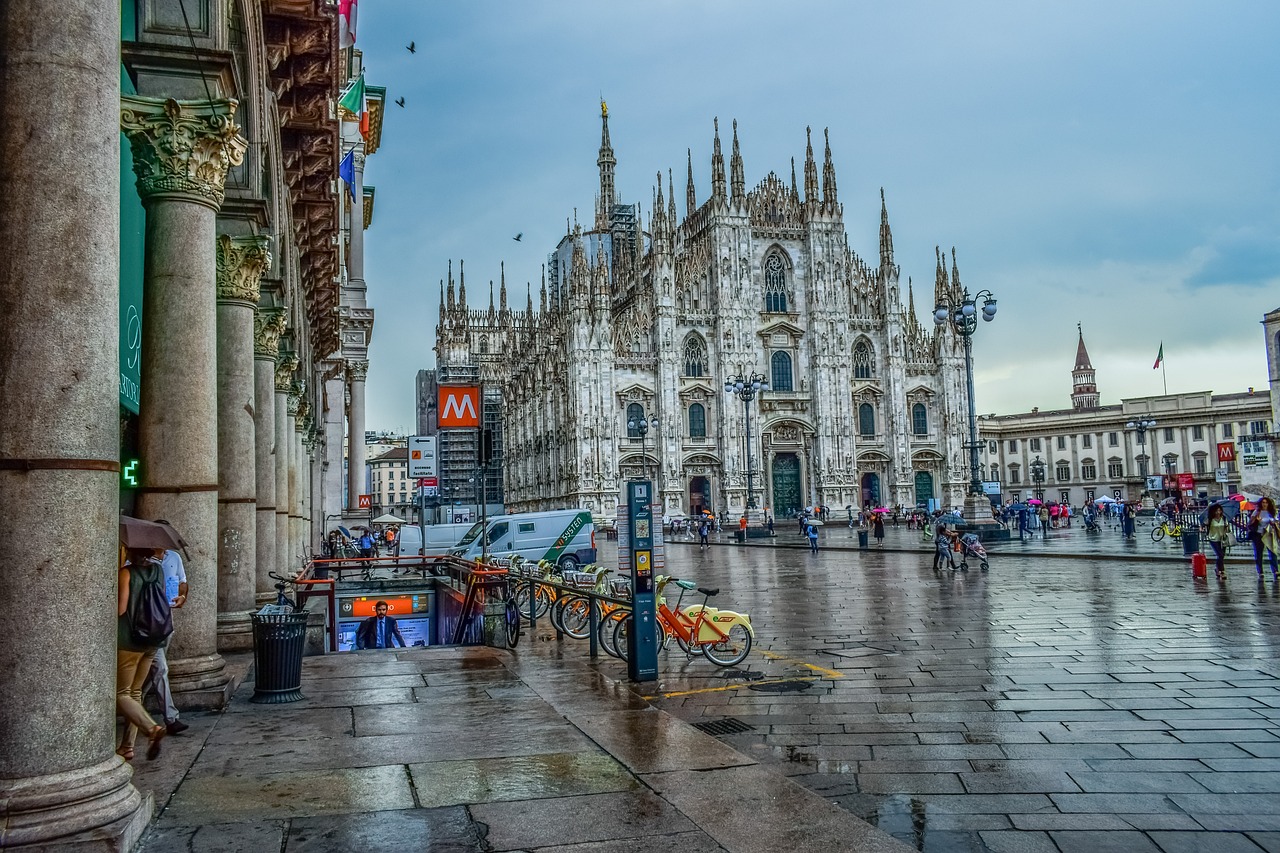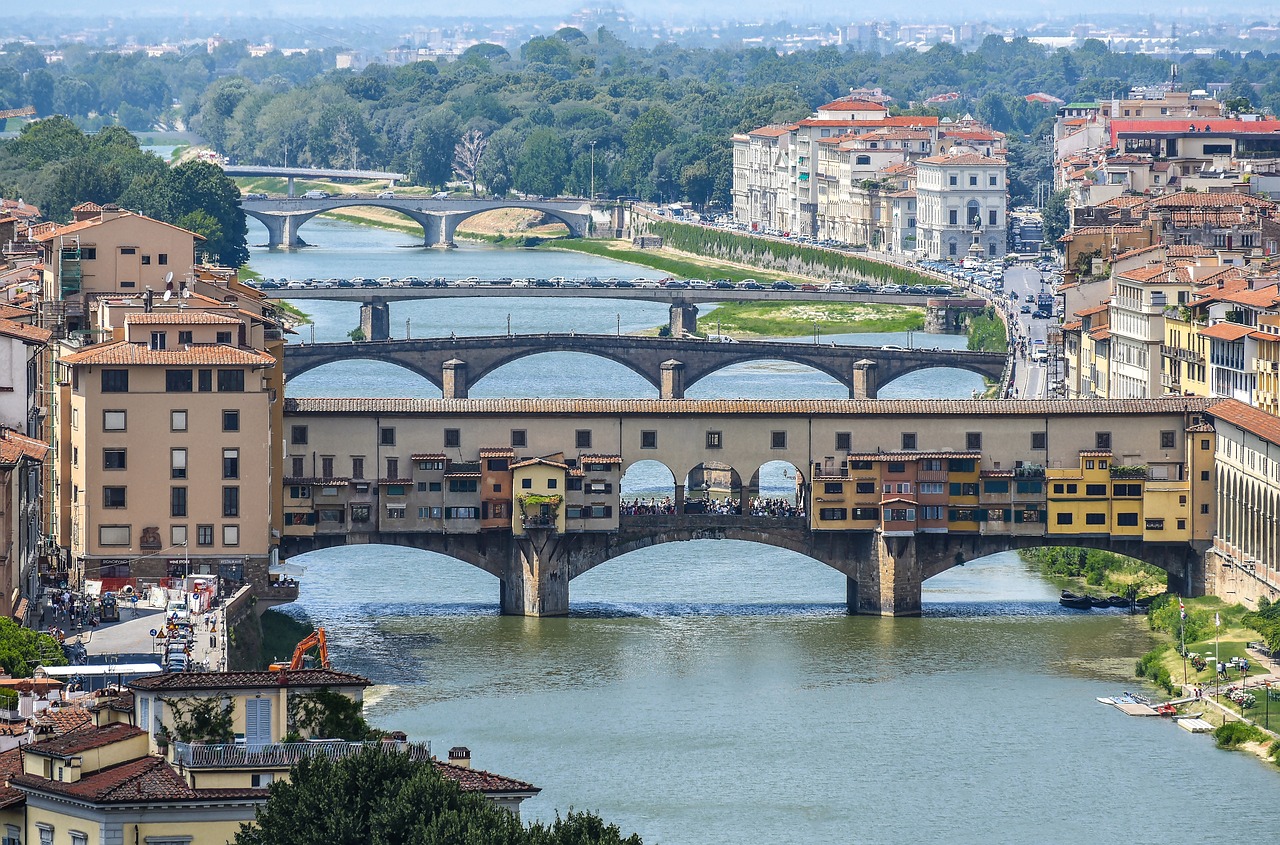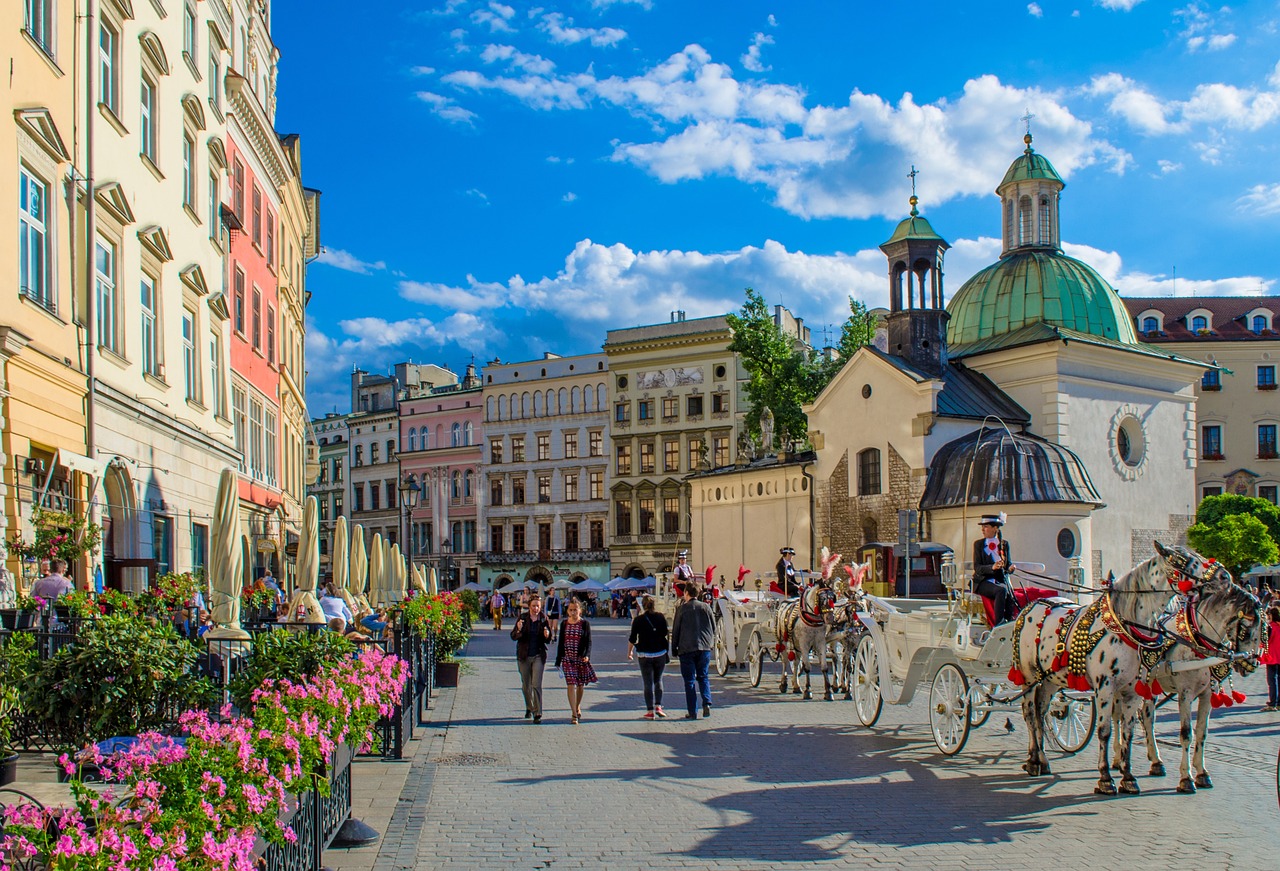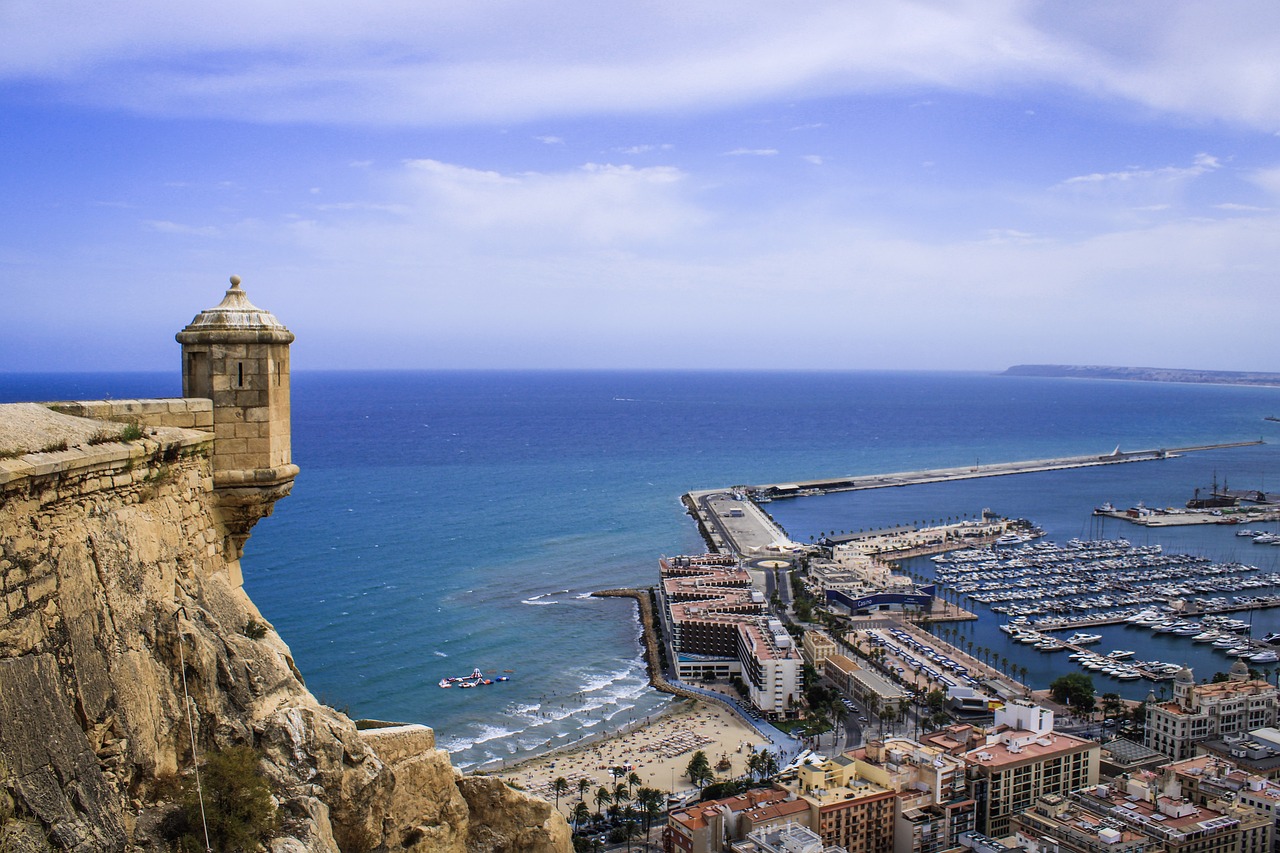Milan is a city located in the Lombardy region of northern Italy. It is the capital of the province of Milan and the second-most populous city in Italy after Rome. Milan is known as a global capital of fashion, design, and business, and is home to many important cultural institutions and landmarks.
Short History
Milan is a city located in the northern part of Italy and is the capital of the Lombardy region. The city has a rich history dating back to 600 BC, when the Celts settled in the area. During the Roman era, Milan became an important trade center and was a hub for commerce, art, and culture. In the Middle Ages, Milan was ruled by various dynasties, including the Visconti and the Sforza families. During the Renaissance, Milan became a center for artistic and cultural development, with many famous artists and architects contributing to the city’s architectural and artistic legacy. In modern times, Milan has become a center for fashion, business, and finance, and is recognized as one of the most important cities in Europe.
Architecture
Milan has a rich architectural heritage with buildings and structures dating back to the Roman Empire. Some of the most notable architectural styles found in Milan include Romanesque, Gothic, Renaissance, Baroque, and Neoclassical. Here are some of the most iconic buildings and structures in Milan:
- Milan Cathedral: This Gothic cathedral is the most famous landmark in Milan and one of the largest churches in the world.
- Galleria Vittorio Emanuele II: One of the world’s oldest shopping malls, this covered arcade features a stunning glass dome and intricate mosaics.
- Sforza Castle: This medieval castle was once home to the ruling Sforza family and now houses several museums and art collections.
- La Scala Opera House: This world-famous opera house is renowned for its stunning neoclassical architecture and prestigious performances.
- Palazzo Reale: This royal palace is home to some of the most important art exhibitions and cultural events in Milan.
- Pirelli Tower: This 1960s skyscraper was once the tallest building in Italy and is a symbol of Milan’s post-war economic growth.
- Bosco Verticale: This innovative residential building features a vertical forest of over 20,000 trees and plants, making it one of the most unique and sustainable buildings in the world.
- San Siro Stadium: This iconic stadium is home to two of Italy’s most famous football teams, AC Milan and Inter Milan, and has hosted numerous international events.
Overall, Milan’s architecture reflects the city’s rich history and artistic legacy, with a mix of ancient and modern styles that create a unique and vibrant urban landscape.
Museums and Galleries
Milan is home to numerous museums and galleries that showcase art, design, history, and culture. Here are some of the most interesting ones:
- Pinacoteca di Brera – This museum houses a collection of Italian Renaissance art, including works by Raphael, Caravaggio, and Titian.
- Museo del Novecento – Dedicated to 20th-century art, this museum features works by Italian artists such as Giorgio de Chirico, Umberto Boccioni, and Piero Manzoni.
- Galleria d’Arte Moderna – This gallery displays modern and contemporary art from the 18th to the 21st century, including works by Van Gogh, Cézanne, and Picasso.
- Triennale di Milano – This museum is dedicated to design and architecture, showcasing exhibitions and installations on contemporary design.
- Museo Nazionale della Scienza e della Tecnologia Leonardo da Vinci – This science and technology museum features exhibits on the life and work of Leonardo da Vinci, as well as interactive displays on science and technology.
- Castello Sforzesco – This castle was built in the 15th century and now houses several museums and art collections, including the Museum of Ancient Art, the Museum of Musical Instruments, and the Museum of Applied Arts.
- Museo Archeologico – This museum displays ancient artifacts from Milan and the surrounding region, including Roman and Etruscan relics.
- Museo Poldi Pezzoli – This museum features a collection of decorative arts, including Renaissance and Baroque paintings, furniture, and ceramics.
- Fondazione Prada – This contemporary art museum was designed by architect Rem Koolhaas and features exhibitions and installations by international artists.
- Museo Bagatti Valsecchi – This museum displays a collection of Renaissance art and decorative arts in a historic 19th-century mansion.
These are just a few of the many museums and galleries that Milan has to offer.
Landmarks and Monuments
Milan is home to many beautiful landmarks and monuments that attract visitors from all over the world. Here are some of the most interesting ones:
- Milan Cathedral (Duomo di Milano): This iconic cathedral is one of the largest and most intricate Gothic cathedrals in the world. It features an impressive facade, stunning stained glass windows, and breathtaking views of the city from the rooftop.
- The Last Supper (Il Cenacolo): Housed in the Convent of Santa Maria delle Grazie, this world-famous mural by Leonardo da Vinci depicts the last meal of Jesus and his disciples.
- Sforza Castle (Castello Sforzesco): This impressive castle was built in the 15th century and now houses several museums, including the Museum of Ancient Art, the Museum of Musical Instruments, and the Egyptian Museum.
- Galleria Vittorio Emanuele II: This elegant 19th-century shopping arcade is known for its beautiful architecture and high-end shops, including Prada, Gucci, and Louis Vuitton.
- La Scala: This world-renowned opera house has hosted many of the world’s most famous singers and musicians, including Giuseppe Verdi, Maria Callas, and Luciano Pavarotti.
- Brera Art Gallery (Pinacoteca di Brera): This art gallery houses a vast collection of Italian Renaissance and Baroque art, including works by Raphael, Caravaggio, and Titian.
- Piazza del Duomo: This large square in the heart of Milan is surrounded by several historic buildings, including the Milan Cathedral, the Royal Palace of Milan, and the Galleria Vittorio Emanuele II.
- Santa Maria delle Grazie: This beautiful church is known for its stunning architecture and its association with Leonardo da Vinci’s famous mural, The Last Supper.
- Porta Sempione: This historic gate was built in the early 19th century and is one of the most famous landmarks in Milan. It marks the entrance to Parco Sempione, a large public park in the city center.
- Navigli: This historic neighborhood in Milan is known for its picturesque canals, trendy bars, and restaurants, making it a popular spot for locals and tourists alike.
These are just a few of the many landmarks and monuments that make Milan a must-visit destination for anyone interested in art, architecture, and history.
Parks and Green Spaces
Milan is a city that offers a lot of parks and green spaces to relax and enjoy nature, and here are some of the most interesting ones:
- Parco Sempione – Located right next to the Castello Sforzesco, this is one of the largest and most popular parks in Milan. It features a large pond, a small arena, several monuments, and many walking paths.
- Giardini Pubblici Indro Montanelli – Located near the Porta Venezia gate, this park is known for its neoclassical-style buildings, fountains, and a small lake with ducks.
- Parco Nord Milano – This is the largest park in Milan and is located in the northern part of the city. It offers many sports facilities, walking paths, and bike trails.
- Orto Botanico di Brera – Located in the Brera district, this botanical garden is home to more than 4,000 plant species from all over the world.
- Parco delle Basiliche – This small park is located near the Basilica di San Lorenzo and the Basilica di Sant’Eustorgio. It features many trees and benches, making it a great place for a relaxing break.
- Parco Forlanini – Located in the eastern part of Milan, this park is known for its large green areas, playgrounds, and many events that take place throughout the year.
- Parco Lambro – Located in the northeastern part of the city, this park is popular among cyclists and runners. It features many trails and paths, and it’s a great place to escape the city and enjoy nature.
- Parco Nord Milano – This is the largest park in Milan and is located in the northern part of the city. It offers many sports facilities, walking paths, and bike trails.
Shopping Districts
Milan is known for being a major fashion capital and a shopping haven for luxury brands. Here are some of the best shopping districts in Milan:
- Quadrilatero della Moda: Also known as the “Fashion Quadrilateral,” this district is located in the heart of Milan and is home to the most prestigious fashion brands, such as Armani, Gucci, Prada, and Versace.
- Brera: This historic district is known for its artistic and bohemian vibe, and it’s a great place to shop for independent boutiques, vintage clothing, and artisanal goods.
- Corso Buenos Aires: This busy shopping street is one of the longest in Europe and offers a wide range of affordable fashion brands, as well as high-end stores like Diesel and Zara.
- Galleria Vittorio Emanuele II: This stunning glass-covered arcade is a must-visit for its beautiful architecture and luxury shops, including Louis Vuitton, Prada, and Gucci.
- Via Monte Napoleone: This street is often called the most expensive shopping street in Italy and is home to high-end fashion brands, jewelry stores, and luxury boutiques.
- Navigli: This canal district is home to many vintage and antique stores, as well as trendy fashion boutiques and artisanal shops.
- Porta Ticinese: This trendy district is popular with younger crowds and offers unique fashion stores, vintage shops, and independent boutiques.
Overall, Milan offers an abundance of shopping options for every taste and budget, making it a shopper’s paradise.
Food and Drink
Milan is known for its rich culinary tradition and boasts many delicious dishes and drinks. Here are some food and drinks to try in Milan:
- Risotto alla Milanese: A classic dish made with saffron, butter, and Parmesan cheese.
- Ossobuco: A hearty dish made with veal shanks and vegetables, usually served with risotto.
- Cotoletta alla Milanese: Breaded and fried veal cutlet that is a Milanese specialty.
- Panettone: A sweet bread filled with candied fruit, raisins, and nuts that is typically eaten during the Christmas season.
- Campari: An Italian bitter aperitif that is often mixed with soda or used in cocktails.
- Aperitivo: A pre-dinner drink and snack that is a Milanese tradition. Bars and restaurants offer a selection of small bites to enjoy with your drink.
- Gelato: Italian-style ice cream that is a favorite dessert in Milan.
- Espresso: A strong, short coffee that is a staple in Italian culture.
Milan also has a thriving coffee culture, and it is worth trying different coffee shops and cafes to taste the different blends and styles of coffee. Additionally, there are many wine bars and enotecas (wine shops) in Milan where you can sample Italian wines.
Transportation
Milan has an extensive and efficient public transportation system that includes buses, trams, and a metro system consisting of four lines. Here are some of the best ways to move around Milan:
- Metro: Milan’s metro system is the fastest and most convenient way to get around the city. The four lines cover the most important areas and attractions.
- Bus: Milan’s buses are frequent and cover the city’s entire urban area, including its suburbs. They are a good option for getting around areas not covered by the metro.
- Tram: Milan’s trams are a unique and charming way to see the city. The trams run through the historic center and are a great way to take in the sights and sounds of Milan.
- Bike: Milan has a bike-sharing program called BikeMi, which has over 4,000 bikes available to rent at over 280 stations throughout the city.
- Taxi: Taxis are readily available throughout the city, and you can either hail them on the street or call for one.
- Walk: Milan is a very walkable city, and many of its main attractions are located within walking distance of each other. Walking is a great way to explore the city’s charming streets and architecture.
City Safety
Milan is generally considered a safe city, although like any big city, there are areas that may be less safe than others. It is important for visitors to take common safety precautions such as avoiding unlit and deserted areas at night, being aware of pickpocketing and other petty crimes, and keeping an eye on personal belongings. It is also a good idea to be cautious when using public transportation, especially at night. Overall, however, Milan is considered to be a safe destination for travelers.
Expensive or Cheap
Milan can be considered an expensive city, especially when compared to other Italian cities. Accommodation, food, and transportation costs are generally higher in Milan than in other parts of the country. However, it is still possible to find budget-friendly options, especially if you plan ahead and do some research. Some areas of the city, such as the upscale shopping district of Via Montenapoleone, are particularly expensive, while other neighborhoods offer more affordable options.
Best Time to Travel
The best time to travel to Milan depends on personal preferences and what you hope to experience during your visit. Here’s a breakdown of what to expect during each season:
- High season (June to August, December to January): This is the peak tourist season in Milan, with warm weather in the summer and holiday festivities in the winter. However, this is also the busiest time of year, and prices for accommodation and activities tend to be higher.
- Shoulder season (April to May, September to November): This is a good time to visit Milan if you want to avoid the crowds of high season but still enjoy relatively good weather. Temperatures are typically mild, and there may be occasional rain showers.
- Low season (February to March): This is the low season in Milan, with fewer tourists and lower prices on accommodation and activities. However, temperatures can be quite cool, and some outdoor attractions and restaurants may be closed.
Overall, the best time to travel to Milan largely depends on your personal preferences and what you hope to experience during your visit. If you want to enjoy warm weather or holiday festivities, high season is the best time to visit, but be prepared for crowds and higher prices. If you want to avoid the crowds and enjoy lower prices, low season may be a good option, but be prepared for cooler temperatures and fewer open attractions. Shoulder season may offer a good balance between good weather and lower prices/crowds.
Date Ideas
Milan is a city with many romantic spots that can make for great date ideas. Here are some suggestions:
- Enjoy a sunset aperitivo at Terrazza Aperol, which offers stunning views of the Duomo.
- Take a romantic walk through the Sempione Park and enjoy a picnic or a coffee at one of the many cafes.
- Visit the Pinacoteca di Brera, an art museum that houses works by some of the world’s most famous artists, including Caravaggio and Raphael.
- Take a stroll through the trendy Navigli district, with its charming canals and artisan shops.
- Enjoy a romantic dinner at one of the city’s many restaurants that specialize in local Milanese cuisine, such as risotto alla milanese or osso buco.
- Visit the Galleria Vittorio Emanuele II, one of the world’s oldest shopping malls, for some high-end shopping or people-watching.
- Take a romantic boat ride on the idyllic Lake Como, which is just a short train ride from Milan.
- Explore the historic Castello Sforzesco, a medieval fortress that now houses several museums and art collections.
- Take a break from the city and explore the stunning Lombardy countryside, which is filled with vineyards, quaint villages, and rolling hills.
- Watch an opera or ballet performance at the iconic La Scala theater, one of the world’s most famous opera houses.
These are just a few ideas, but there are many more romantic things to do in Milan depending on your interests and preferences.
Fun and Interesting Facts
Here are some fun and interesting facts about Milan:
- Milan is considered the fashion capital of the world, and is home to some of the biggest fashion houses, including Armani, Versace, and Dolce & Gabbana.
- The iconic Cathedral of Milan, or the Duomo di Milano, took almost 600 years to complete and is the fifth-largest cathedral in the world.
- Leonardo da Vinci’s famous fresco, The Last Supper, is located in the Church of Santa Maria delle Grazie in Milan.
- Milan is home to one of the oldest shopping malls in the world, the Galleria Vittorio Emanuele II, which was built in the late 1800s.
- The city is famous for its aperitivo culture, where locals enjoy drinks and small bites before dinner.
- Milan is home to the La Scala opera house, which is considered one of the most prestigious opera houses in the world.
- Milan is also famous for its football team, AC Milan, which has won numerous championships and is one of the most successful football clubs in the world.
- Milan is known for its rich history and culture, as well as its stunning architecture, beautiful parks, and vibrant nightlife.
In conclusion, Milan is a beautiful and vibrant city that is known for its fashion, art, and culture. From its stunning architecture to its world-renowned museums and galleries, there is no shortage of things to see and do in Milan. Whether you’re interested in shopping, exploring historic landmarks, or indulging in delicious food and wine, Milan has something for everyone.



